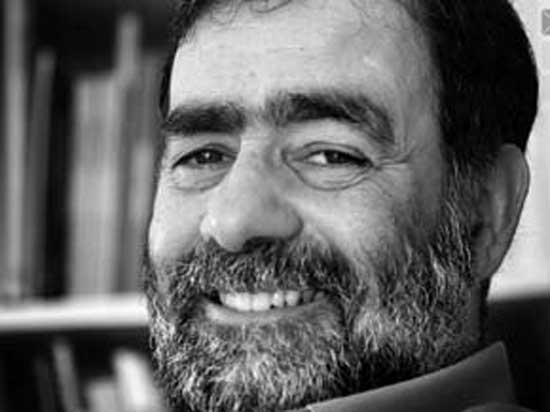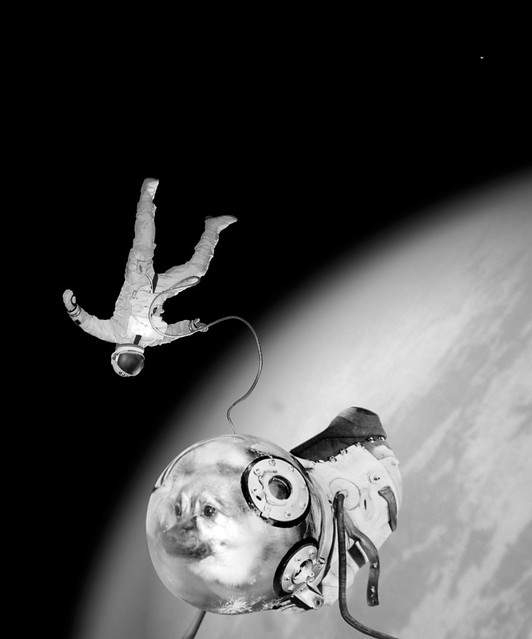Camouflages. Joan Fontcuberta
Still today, both in the realms of everyday life and in the strict context of artistic creation, photography appears to us as a technology at the service of truth: the camera testifies to what has happened, writes Joan Fontcuberta in El beso de Judas ( 1997).

Herbarium (1984) [1], the oldest of the projects in Camouflages, presents a collection of singular plants, photographed in close-up on a neutral background. In its style, Herbarium follows the model of the scientific repertoires of the beginning of the century, and in particular the project of Karl Blossfeldt, who in the first decades of the 20th century created an extensive herbarium, with close-ups of plants in surprising shapes, very similar to the aesthetics of art nouveau then in vogue. On this model, Fontcuberta develops a parodic herbarium, which pays homage to those of Blossfeldt.
Fauna (1987)[2], made in collaboration with Pere Formiguera, tells the story of Professor Peter Ameinsenhaufen, a scientist who, at the beginning of the 20th century, undertook a search for hybrids and genetic mutations. The result is an extensive zoological repertoire, of which documents, photographs and stuffed animals are presented here, giving an idea of Ameisenhaufen's discoveries, such as the Corcopithecus icarocornu, a long-tailed ape with large wings found in the Amazon jungle, which hunts thanks to the powerful horn on the top of its head.
Sputnik (1997)[3], presents the story of Ivan Istochnikov, a Soviet astronaut who disappeared after the failure of his mission in 1968. Although he was a celebrated figure at the time, the USSR did not want to acknowledge the failure of his mission, and erased Istochnikov from the archives, relegating him to oblivion. Only the appearance of private documents after the fall of the Wall has made it possible to reconstruct the story of this character, through photographs, letters and objects, which show the heroism and public importance that Soviet astronauts played in the years of the Cold War.
Constellations (1993)[4], the ambiguity of scientific images has a parodic continuation in this series. In Constellations the images show what appear to be a series of views of constellations, whose data are indicated in the titles, which provide exact information about the place and time at which the images were taken.
The artist and photography (1995)[5], aims to recover unknown works by some of the great masters of art of the last century (Picasso, Miró, Dalí and Tàpies), to show their relationship with the photographic medium. Thus, it presents direct photographs, photograms, photo collages and other works that show how photography has served as a creative stimulus for many of the great creators of the twentieth century.
Camouflages (2009) [6], consisting of six variations on The gentleman with his hand on his chest. In each of them, a part of El Greco's work is discreetly replaced by a member of Joan Fontcuberta's own body, which thus appears camouflaged inside the classical portrait. His theme, one could say, is the changing identity of the artist, whose activity is divided into the various tasks of which the previous projects speak. A fragmentation that also translates into the presentation of this series, not as a coherent whole in a specific room, but dispersed in different parts of the museum, which in principle would not correspond to it.
Orogenesis (2002)[7], extends the problems of authorship, veracity and construction to the digital era. Fontcuberta resorts directly to artifice: thanks to a computer program he generates fictitious landscapes that respond to the clichés of romantic aesthetics. The Museo Universidad de Navarra houses a complete series of these landscapes made from an album, of military origin, of views of Gibraltar belonging to the program Tender Puentes.
JOAN FONTCUBERTA

His creative work, which deals with the conflicts between nature, technology, photography and truth, has been the subject of personal exhibitions at the MoMA, New York (1988)and the Musée Cantini, Marseille (1990); Musée Cantini, Marseille (1990)and the Art Institute, Chicago (1990) ; the MNAC, Barcelona (1999); the Palazzo delle Esposizioni, Rome (2001); Aperture Foundationin New York (2006); FOAM FotografiemuseumAmsterdam (2010); Casa de la Moneda, Bogota (2011), among many others.
His works are in collections such as the Metropolitan Museum of Art (New York), San Francisco MoMA, National Gallery of Art (Ottawa), Musée d'Art Contemporain- Centre Georges Pompidou (Paris), Maison Européenne de la Photographie (Paris), Stedelijk Museum (Amsterdam), MACBA (Barcelona) and the Museo de la Universidad de Navarra.
LECTURE BY JOAN FONTCUBERTA

WORKSHOP "AN EXPERIMENT WITH TIME".

More information: Download pdf
EXHIBITION CATALOGS

Camouflages, Joan Fontcuberta
Fontcuberta's exhibition is completed with this catalog that describes the projects that make up the exhibition. The artist dialogues with profound ideas of modern times: the strength of the discourses that determine our view of the world, the place of the artist in society, and the function of humor in the face of authority.
Price: 30 ac |

Orogenesis, Joan Fontcuberta
On sale in store and online |
SOME OF THE WORKS IN THE EXHIBITION
ACKNOWLEDGMENTS
MACBA
la Caixa" Welfare Projects
Science Museum of the University of Navarra
Pamplona Planetarium
Dr. Romero Nieto Foundation
Fermín Alvira
Javier Landa
Date
April 13, 2016

